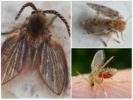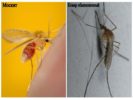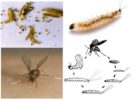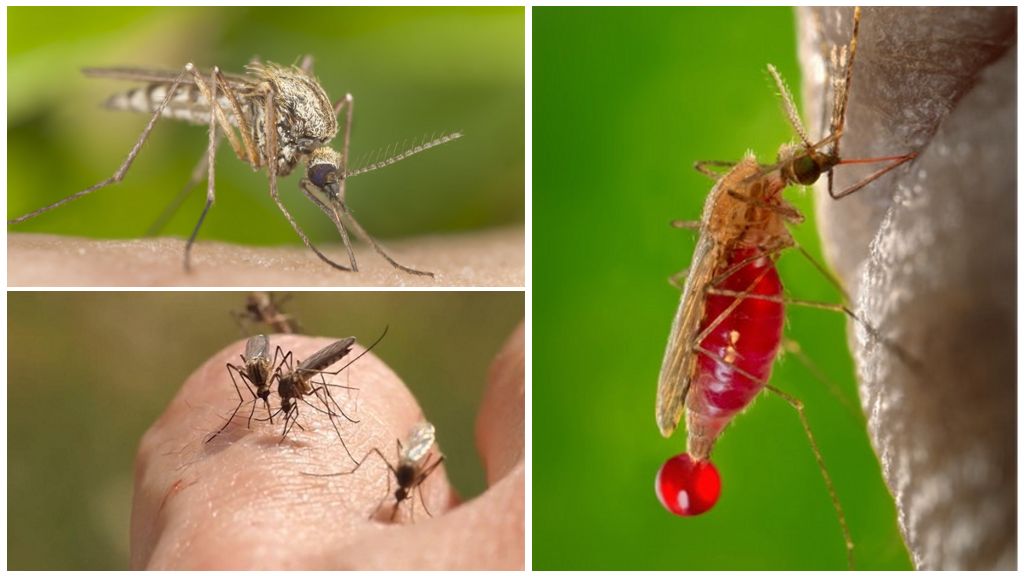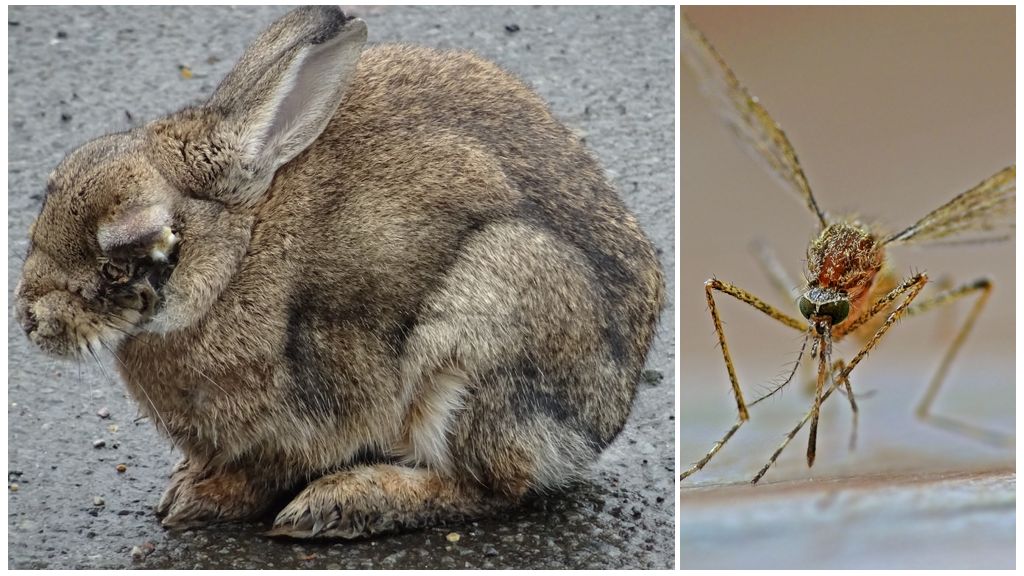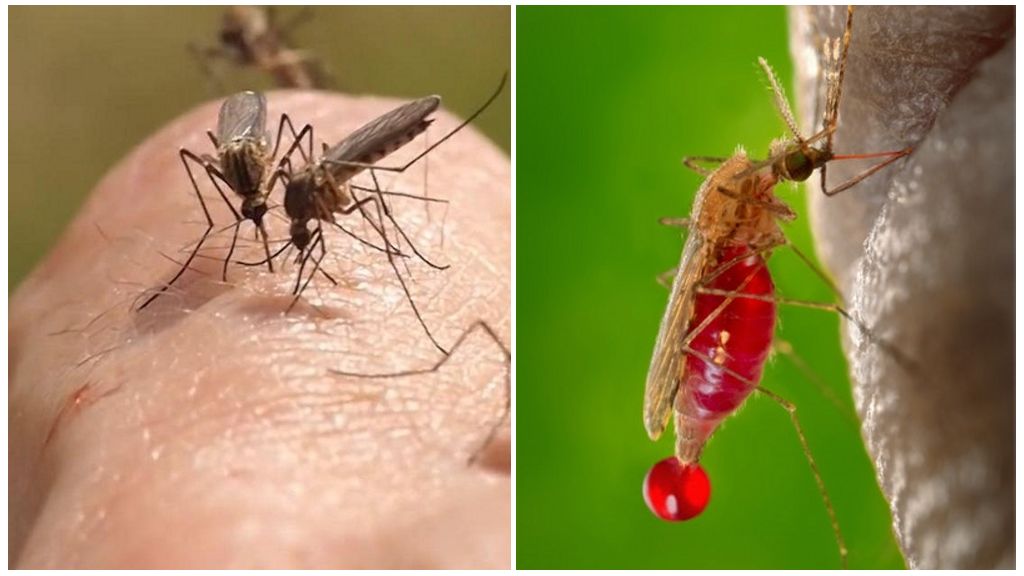- Butterfly
- Mosquito and common mosquito
- Mosquito breeding
- Insect bites
In the Russian-speaking space, there are two opinions about mosquitoes. First: mosquitoes are the same mosquitoes, only in English. Second: mosquitoes are not mosquitoes, but live only in southern countries. Both of these opinions are erroneous.
Mosquito Habitat
The vast majority of mosquito species actually live in the tropical and subtropical zones of the planet. But this circumstance does not relieve the inhabitants of Eurasia from these bloodsuckers. Two genera: Sergentomyia and Phlebotomus live in the Palaearctic zone, which covers the entire Eurasian continent. Eurasian mosquitoes live both in the tundra and in the arid regions of the continent. Species living in deserts and semi-deserts have adapted to breed in animal burrows and caves. Some species can breed in fruits. One species lays eggs in figs.
Why not mosquitoes
To understand who mosquitoes are and why they are not mosquitoes, you will have to go a little deeper into the scientific classification. Mosquitoes and mosquitoes belong to the same order: dipterans. Further their paths diverge. Differences between mosquitoes and mosquitoes start with a "pedigree." Mosquitoes belong to the mosquito family, mosquitoes to the family of mosquitoes.
On a note!
All blood-sucking flying insects, even the largest ones, are included in the “vulture complex”.
Butterflies are small blood-sucking insects that look like small moths. Because of this, the family got its name. Below is a photo of the butterfly.
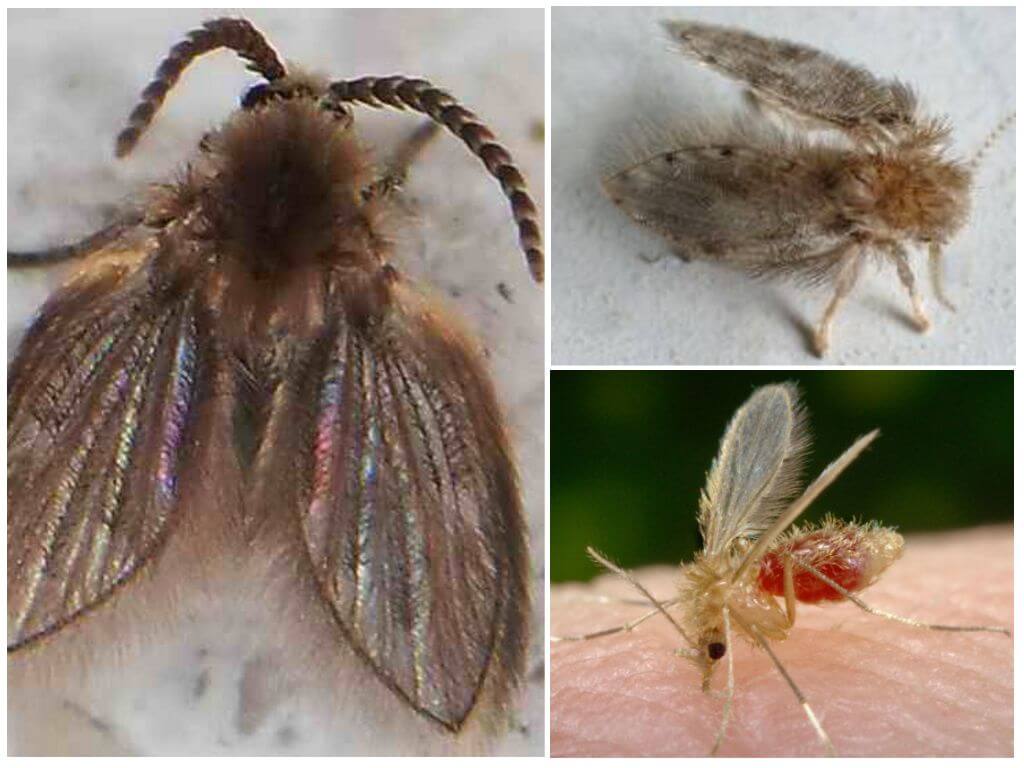
A mosquito, not belonging to the mosquito family, looks more like a mosquito than a butterfly. Compare them with a photo of a mosquito and an ordinary mosquito.

The difference between a mosquito and a mosquito is clearly shown in the table.
| Compare parameter | Mosquito | Mosquito |
|---|---|---|
| Sound | silent | characteristic ringing |
| The size | up to 4 mm | up to 15 mm |
| Wings | raised and positioned at an angle to the body | located parallel to each other and the body of the insect |
| Torso | covered with bristles | no bristles |
| Breeding sites | moist soil, burrows, caves, fruits | water |
Mosquito eating pattern and the mosquito is the same: males drink floral nectar, fertilized females need blood.
On a note!
An adult female mosquito before a bite makes several jumps over the victim’s body.
Some of the species of the Eurasian phlebotomus genus are synanthropic, that is, they have adapted to live next to a person. In the city, places where mosquitoes of these species live can be moist basements. In nature, bloodsuckers of this species are most often found in the dense shade of bushes or undergrowth. Although the larvae do not live directly in the water, they need moisture-saturated soil. In the absence of direct contact with water, they die within a day.
Breeding

9 days after the bloodsucking session, the female lays 30-60 pieces of eggs. The entire life cycle, from the egg to the mosquito imago (adult), takes about 7 weeks. The larva that emerged a week later from the egg molts 4 times. In total, the growth process to the pupal stage takes an average of 1 month. After the 4th stage, the larva pupates and after 11 days an adult insect appears from the egg.
On a note!
Larvae feed on rotting organic debris.
But if we take into account not only the active phase of the life of bloodsuckers, but their adaptability to adverse climatic conditions, the question of how many mosquitoes live does not become so straightforward. If the timing of development were strictly observed, mosquitoes would become extinct within one year. They live from the Cretaceous period and are not going to disappear.
The secret here is in diapause, which is characteristic of many palearctic species. Adults freeze in winter, regardless of when they reached the adult stage - 2 months or 2 days before frosts. The larvae of the fourth stage of development, capable of falling into suspended animation, “leave” for the winter.
Interesting!
Diapause is a condition in which all processes in the body proceed very slowly.
The appearance of adult insects in summer immediately in large quantities is also due to diapause. Larvae emerging from anabiotic state in late May - early June pupate almost simultaneously. The exit from adult pupae also occurs at the same time.
The harm and benefits of mosquitoes
Traditional opinion: there is no use for bloodsuckers, only harm. In fact, these small flyers, together with other insects similar to them, form the basis of the food pyramid in any ecosystem: forest, desert, city, and more. Many species of birds, amphibians, reptiles and animals feed on adults. Larvae, processing organics rotting in the earth, contribute to soil inexhaustibility.

But the harm to humans from them can be palpable. Mosquito bites are painful. When bitten, a bloodsucker sprays saliva into the wound with substances that prevent blood coagulation.
On a note!
If the victim has an allergy, the bite site will swell at best. At worst, death is possible. Even those who do not have allergies, mosquito bites turn red, swell and itch for a long time. When combing, there is a great chance of introducing an infection into the wound.
In hot regions, phlebotoderma may develop as a result of the sensitivity of the human body to mosquito bites. This reaction to bites is expressed in the rash of itchy nodules throughout the body.
Mosquitoes are carriers of the disease of leishmaniasis. This is a parasitic disease, manifested in the form of ulcerative papulla. In addition to leishmaniasis, mosquitoes can tolerate pappatchi fever and bartonellosis. All these diseases are usually common in the southern regions of Eurasia and the population of the northern part could not be afraid of them. But, due to global warming, there is a progress to the north not only of the southern species of plants and animals, but also of pathogens.
Pappatachi fever is one of the most dangerous diseases. Distributed in the Mediterranean, the Balkans, the Middle East, Indochina and East Africa. Its mosquitoes, bearing the name of fever, carry it. What mosquitoes look like phlebotomus pappatachi:
- size 2-3 mm;
- color is pale yellow;
- wings and body covered with long bright bristles.
The bites of this type of bloodsucker are painless, a person does not notice that he was attacked by a pappat mosquito. For this reason, you can not give importance to the symptoms of a developing disease.
Mosquito control methods
The methods of struggle in this case are the same as with mosquitoes and flies:
- mechanical:
- chemical.
Mechanical methods include installing nets on windows. Apart from fly swatter, which are ineffective. It should be borne in mind that the cells of the mosquito net should be smaller than mosquito nets. To get rid of dampness in the basement, it is enough to monitor the serviceability of water and sewer pipes. Accumulation of heaps of organic debris should not be allowed in the surrounding area. This is a great place to breed mosquitoes.
Chemical methods include treating the area and premises with any kind of insecticide. This also includes specially designed for use in the bedroom at night electric fumigatorsvaporizing substances that repel bloodsuckers.
Important!
Fumigator Spiralto be set on fire is intended for outdoor use.
When going to nature more often use mosquito sprays or ointments. Noticed that from folk remedies mosquito repellent smell of citrus is good.
In urban environments, mosquitoes are often found in homes with damp basements. To get rid of these insects, you will have to contact a housing company with a requirement to repair leaking pipes and carry out disinsection. If you observe cleanliness and order on the territory, you can get rid of mosquitoes. Their maximum flight limit is 1.5 km, usually they overcome distances of no more than 25 m.
